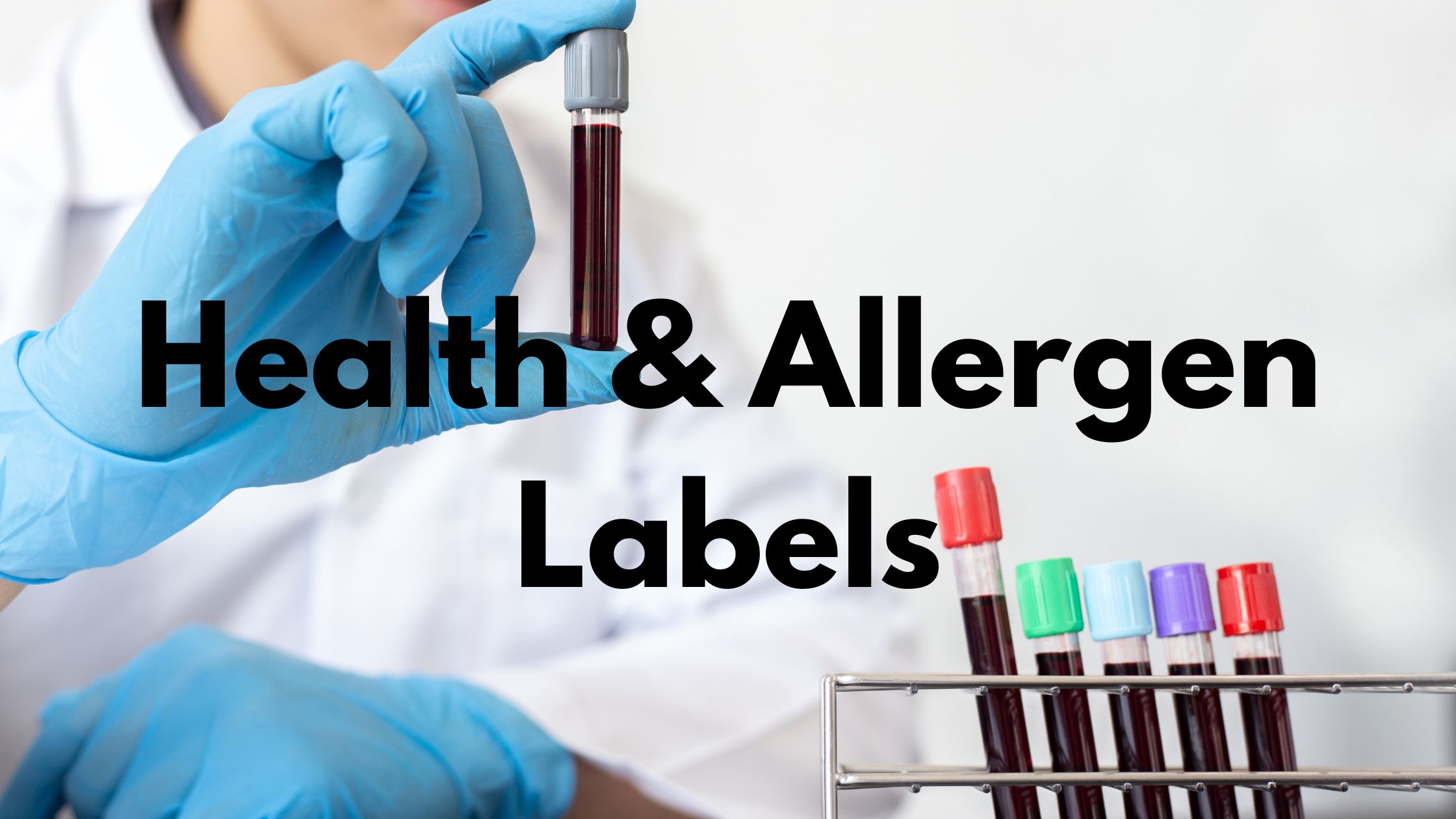In today’s highly interconnected and fast-paced world, consumers are becoming increasingly conscious about what they put into their bodies. With the rise in food allergies and intolerances, as well as the growing concern over potential health risks associated with certain ingredients and additives, it is no surprise that more and more people are paying close attention to product labels.
In particular, health and allergen labels have become a crucial tool for safeguarding our well-being. These labels provide vital information about the contents of a product, allowing consumers to make informed decisions about their purchases and ensuring their safety.
In this article, we will explore the importance of health and allergen labels, their role in maintaining a healthy lifestyle, and the regulations and standards that govern their use.
We will also discuss the challenges faced by manufacturers in properly labeling their products, and the steps that can be taken to improve the effectiveness and clarity of these labels. By understanding the significance of health and allergen labels, we can all take steps towards protecting our well-being and making more informed choices about the products we consume.
Importance of Accurate Allergen Labeling.
In today’s society, accurate allergen labeling is crucial for the health and well-being of consumers. With the rise in food allergies and sensitivities, it is essential for manufacturers to clearly and accurately label their products to prevent potential health risks.
Allergen labels serve as a safeguard for individuals who may have severe reactions to certain ingredients, allowing them to make informed decisions about the products they consume. Neglecting to include accurate allergen information can have serious consequences for consumers and damage a company’s reputation.
Therefore, it is imperative for manufacturers to prioritize the accuracy and clarity of their allergen labels to ensure the safety and well-being of their consumers.
Key Regulations for Health Labeling
In addition to allergen labeling, there are other key regulations that must be followed when it comes to health labeling. These include listing the nutrition information, ingredients, and serving sizes on food products. It is also important to use custom medical labels in order to accurately label any potential health claims, such as “low-fat” or “gluten-free.”
The FDA has strict guidelines for these claims and failure to comply can result in penalties and damage to a company’s reputation. Allergen labeling is just one aspect of health labeling that must be taken seriously to safeguard the well-being of consumers and maintain compliance with regulations.
Ensuring Consumer Safety and Trust
In order to ensure consumer safety and trust, it is imperative for companies to accurately label their products with health and allergen information. This includes providing detailed nutrition information, ingredients, serving sizes, and precise labeling of health claims. Not only is this a legal requirement, but it also shows a commitment to the well-being of consumers.
Failure to comply with these regulations can result in penalties and damage to a company’s reputation. Therefore, it is essential for companies to take health labeling seriously in order to protect their consumers and maintain regulatory compliance. By providing transparent and accurate information, companies can build trust with their customers and promote a positive brand image.
Understanding Allergen Risk Assessment
As businesses and consumers become more aware of the risks associated with food allergies, the importance of accurate and thorough allergen risk assessment has become increasingly evident. This process involves identifying potential allergens in a product and evaluating the risk of exposure to consumers.
Factors such as the type and severity of the allergen, potential cross-contamination, and the target audience of the product must all be considered during this assessment. By conducting a thorough allergen risk assessment and properly labeling products, businesses can safeguard the well-being of their consumers and comply with regulatory standards, building trust and loyalty among their customer base.
Best Practices for Label Compliance
In order to effectively safeguard consumer well-being and comply with regulations, businesses must follow best practices for label compliance. This includes accurately identifying and labeling potential allergens in products, properly evaluating and communicating the risk of allergen exposure, and regularly reviewing and updating labels as needed.
It is also important for businesses to stay informed about any changes in regulations or new allergens that may need to be labeled. By following these best practices, businesses can not only ensure compliance, but also prioritize the safety and trust of their consumers.
In conclusion, health and allergen labels play a crucial role in safeguarding the well-being of consumers. By clearly and accurately labeling products, individuals can make informed decisions about what they consume and avoid any potential health risks.
It is the responsibility of companies to prioritize the safety and health of their customers by providing transparent and comprehensive labeling. With the increasing awareness of food allergies and dietary restrictions, proper labeling is essential in promoting overall well-being and creating a more inclusive and mindful society. Let us continue to advocate for clear and thorough labeling practices to ensure the health and safety of all individuals.
Related Articles:
Taxonomy Code Lookup | Provider Taxonomy Codes
AAPC: What it is and why it matters in the Healthcare

